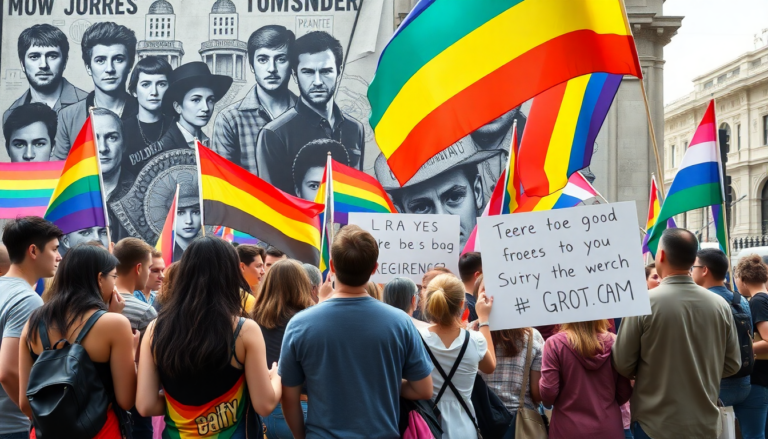Argomenti trattati
The recent clash between Boy George and J.K. Rowling has sparked a heated debate over gender identity and the rights of the transgender community. This drama unfolded on social media, where George, a well-known advocate for LGBTQ+ rights, openly criticized Rowling’s controversial views on transgender issues. But this isn’t just a personal spat; it highlights the wider societal tensions that continue to shape our conversations about gender and identity. So, what exactly went down?
Understanding the Origins of the Dispute
The conflict kicked off when Boy George responded to a thread started by Rowling, who questioned what rights transgender individuals are supposedly losing. George’s reply was sharp: “The right to be left alone by a rich bored bully!” This comment captured his frustration with what he sees as Rowling’s out-of-touch perspective regarding the challenges faced by the transgender community.
Rowling didn’t hold back in her response either. She highlighted the differences in their experiences, sharing her own struggles as a woman in a male-dominated industry. “There are many differences between us, George, but some are particularly relevant to this debate,” she wrote, pointing out her journey while also noting the privileges George has enjoyed. This remark set the stage for a back-and-forth that revealed both personal history and broader societal issues.
The exchange took a darker turn when Rowling brought up George’s past legal troubles, recalling his 2009 conviction for assault. She stated, “You yourself have been convicted of violent assault. The overwhelming number of people who commit crimes of violence are male, just like you,” emphasizing her point about the need for safeguarding in women’s spaces. This accusation added layers of complexity to their feud, intertwining personal history with larger societal implications.
The Broader Context of the Debate
Rowling’s views on gender and identity have become increasingly polarizing, attracting criticism from various quarters, including some of her former collaborators in the Harry Potter franchise. Big names like Daniel Radcliffe and Emma Watson have publicly disagreed with her stance, which has created a rift between the author and the community that once celebrated her work.
In April, a group of actors from the franchise rallied to support the transgender community through an open letter, condemning Rowling’s views. The fallout from her comments has been significant, prompting some fans to threaten boycotts of future Harry Potter projects, including an upcoming TV adaptation where Rowling is set to be an executive producer. Isn’t it fascinating how one person’s opinions can ripple out to affect so many?
This controversy isn’t just about individual opinions; it taps into the broader societal discourse surrounding gender identity and rights. As public figures like Boy George engage in these debates, they mirror the struggles faced by many within the LGBTQ+ community, particularly transgender individuals who often find themselves at the heart of these discussions.
Implications for Public Discourse on Gender Identity
As this feud continues to play out, it raises crucial questions about how public discourse around gender identity is evolving. The dialogue between George and Rowling exposes the deep divides in society regarding these issues. While some call for a more inclusive understanding of gender, others cling to traditional views, creating a contentious atmosphere where personal attacks frequently overshadow constructive dialogue.
Moreover, the media’s portrayal of such conflicts often sensationalizes rather than educates, which can impede progress in understanding the complexities of gender identity. As both sides become entrenched in their positions, finding common ground becomes increasingly challenging—a necessity for fostering understanding and acceptance.
The implications of this ongoing feud extend far beyond George and Rowling; they resonate with anyone who cares about the evolution of social norms and the rights of marginalized communities. As discussions unfold on social media and beyond, the urgent need for respectful dialogue and empathy is clearer than ever. How can we bridge these divides and foster a more inclusive conversation?

